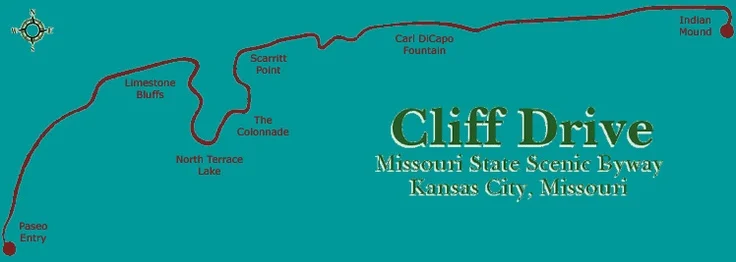Budd Park
Judge Azariah Budd moved to Kansas City with his wife, Sarah Ann, in 1879 after working several years in law. He acquired 40 acres of land and spent his time clearing and cultivating it as well as raising cattle. Budd passed away in 1889 and willed 20 acres of his property to the City, if they paid his widow $3,000 annually until her death. The City accepted the property in 1891 and transformed it into Kansas City’s second park (the first being West Prospect Triangle, now known as Andrew Drips Park).
Sarah Ann Budd donated four additional acres to the park 10 years later, and the City acquired two more after that. In 1896, John and Adriance Van Brunt designed a distinctive frame shelter building near the center of the park. Following this construction trees, maintenance buildings and steps were added to the park. A children’s play area, tennis courts, roque courts and a wading pool and a swimming basin were later added.
The frame shelter building was torn down and a native stone one was built in 1927, designed by Edward Buehler Delk. Budd Park emphasizes an open area with a lack of formal design to provide a place for people to relax.
Cliff Drive
The eastbound lane of Cliff Drive from The Paseo to Indian Mound is open to vehicles; the westbound lane is a dedicated bike and pedestrian lane. There is a bollard system separating the lanes. The drive closes at dusk each weekday evening and reopens the following morning. The drive is closed each weekend for Car Free Weekends.
State Scenic Byway
Cliff Drive is located in George E. Kessler Park in historic Northeast Kansas City and is part of the Kansas City, Missouri Park and Boulevard System. Cliff Drive was officially designated as a State Scenic Byway, one of only five in the state of Missouri, on June 2, 2000. The byway extends approximately 4.27 miles from The Paseo and Independence Avenue through Indian Mound on Gladstone Boulevard at Belmont Boulevard.
In order to receive a State Scenic Byway designation, a byway must have one or more of the following intrinsic qualities: recreational, historic, cultural, archeological, scenic and natural.
Three attributes in particular distinguished Cliff Drive as uniquely qualified to receive Scenic Byway designation. These attributes include:
- Cliff Drive is a representative example of a historically significant urban design and planning effort recognized worldwide.
- Cliff Drive was uniquely critical to the evolution and development of Kansas City as a major metropolitan area.
- Cliff Drive preserves natural features unique to this portion of the Missouri River Valley including limestone bluffs, natural vegetation, and wildlife, particularly unusual because it is located immediately adjacent to the city core within a heavily urbanized environment.
These qualities are representative, unique, irreplaceable, and distinctly characteristic to the Kansas City area.
Historical Points of Interest
Kessler Park, The Concourse, North Terrace Lake, The Colonade, Scarritt Point, The Reservoir, Indian Mound, Prospect Point, The Kansas City Museum, Carl J. DiCapo Fountain, Ronnie DePasco Byway Memorials.
Car Free Weekends
Every weekend, Cliff Drive is closed off to allow for walkers, runners, and bikers alike to use the scenic byway without the fear of automotive traffic.
Kessler Park
In 1971 George Edward Kessler, the Landscape Architect and Engineer who was a driving force in creating Kansas City’s park and boulevard system, was honored by the Board of Kansas City, Missouri Park and Recreation Commissioners when they renamed one of the early parks created through Kessler’s master plan as George E. Kessler Park. The park’s previous name was North Terrace Park and it was an important part of the master plan presented in the first Report of Park and Boulevard Commissioners of Kansas City, Mo. in 1893.
In the 1893 Report possibilities were proposed for the creation of several parks and boulevards throughout Kansas City. The property for the proposed “North Terrace” park was land described as “wild and rugged,” “handsome,” and “beautiful and picturesque”. The creation of “a drive and bridle road” that would follow along the cliffs and through wooded areas was part of the original plan.
303 Acres
St. John Community Garden
Saint John Gardens was created in 2006 when Rebecca Koop purchased abandoned lots next to her pottery studio from the land trust. A small group of neighbors began with a few raised garden beds. Since then, the garden has developed into 40 raised beds, a water catchment system, three rain gardens, a fish pond, an orchard and a community entertainment and cookout space. Many of the one dozen gardeners are artists, which is evident in the colorful creativity throughout the site. Neighbors tend their beds and grow friendships in addition to food for their families.
Park Activities
All of the Historic Northeast Parks have various activities for any exploration level. Cliff Drive/ Kessler Park features hiking, scenic byways, lookout points, a waterfall, small lake, biking lanes, mountain bike trails, frisbee golf course and rock climbing. Budd Park features green space, picnic shelters, community pool, playgrounds, walking paths and tennis courts. You can also find playgrounds, futsal courts, basketball courts, fountain and a scenic lookout point at the Concourse park and historic collonade.














